Molekulardynamik
Prof. Martin Zacharias
Forschungsgebiet
Die Funktion von Proteinen und Nukleinsäuren in lebenden Zellen wird durch ihre molekulare Dynamik bestimmt. Am Lehrstuhl „Molekulardynamik“ werden Computersimulationsmethoden eingesetzt, um die Struktur, Funktion und Dynamik von Biomolekülen zu untersuchen. Zu unseren Zielen zählt dabei ein genaueres Verständnis von Strukturbildungsprozessen und die Entschlüsselung des Mechanismus der Assoziation von Biomolekülen. Moleküldynamiksimulationen basierend auf einem klassischen Kraftfeld bilden unsere wichtigste Methode, um die Molekülbewegung in atomarem Detail zu verfolgen. Die Simulationen erlauben es uns, thermodynamische und kinetische Moleküleigenschaften mit Methoden der statistischen Mechanik zu analysieren. Wir entwickeln darüber hinaus auch Verfahren, um die Bindung von Liganden an Biomoleküle vorherzusagen.
Adresse/Kontakt
Ernst-Otto-Fischer-Straße 8/I
85748 Garching b. München
+49 89 289 12393
Fax: +49 89 289 12444
Mitarbeiterinnen und Mitarbeiter der Arbeitsgruppe
Professor
| Photo | Akad. Grad | Vorname | Nachname | Raum | Telefon | |
|---|---|---|---|---|---|---|

|
Prof. Dr. | Martin | Zacharias | 046 | +49 89 289-12335 |
Sekretariat
| Photo | Akad. Grad | Vorname | Nachname | Raum | Telefon | |
|---|---|---|---|---|---|---|

|
Sonja | Ortner | 047 | +49 89 289-12393 |
Wissenschaftlerinnen und Wissenschaftler
| Photo | Akad. Grad | Vorname | Nachname | Raum | Telefon | |
|---|---|---|---|---|---|---|

|
M.Sc. | Shu-Yu | Chen | 042 | +49 89 289-12564 | |
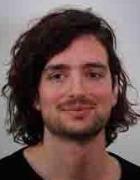
|
M.Sc. | Maximilian | Kienlein | 044 | +49 89 289-12730 | |

|
Brianda | Lopez Santini | 045 | +49 89 289-12731 | ||

|
Dr. | Patrick | Quoika | 048 | +49 89 289-13766 | |
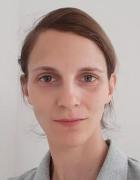
|
Dr. | Maria | Reif | 045 | +49 89 289-12731 | |

|
M.Sc. | Carlos Christian | Sustay Martinez | 040 | +49 89 289-51612 | |

|
M.Sc. | Luis | Vollmers | 044 | +49 89 289-12730 | |

|
M.Sc. | Paul | Westphälinger | 044 | +49 89 289-12730 | |

|
Dr. | Gabriel | Zoldak | 130 | – | |

|
M.Sc. | Richard | Zschau | 042 | +49 89 289-12564 |
Studierende
| Photo | Akad. Grad | Vorname | Nachname | Raum | Telefon | |
|---|---|---|---|---|---|---|

|
B.Sc. | Maximilian | Block | – | – | |

|
Asha | Knipp | – | – | ||

|
B.Sc. | Pawel | Korzeb | – | – | |

|
B.Sc. | Mira Tanja | Mahlein | – | – | |

|
B.Sc. | Yasmin | Saremi Nanji | – | – | |

|
Luis Jakob | Walter | – | – | ||

|
Ziyi | Wang | – | – | ||
Andere Mitarbeiterinnen und Mitarbeiter
| Photo | Akad. Grad | Vorname | Nachname | Raum | Telefon | |
|---|---|---|---|---|---|---|

|
Dr. | Jonathan | Coles | 048 | – | |

|
Susmita | De | – | – | ||

|
M.Sc. | Christina | Frost | – | – | |

|
Margrethe | Gaardlos | – | – | ||

|
Ameya | Harmalkar | – | – | ||
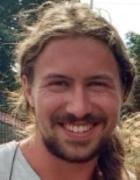
|
M.Sc. | Julian | Hartmann | 701 | – | |

|
Dr. | Manuel | Hitzenberger | 048 | +49 89 289-13766 | |

|
Dr. | Korbinian | Liebl | – | +49 89 289-13697 | |

|
Anshuman J. | Mahapatra | – | – | ||
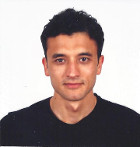
|
M.Sc. | Danial | Pour Jafar Dehkordi | 059 | – | |

|
B.Sc. | Arrien Symon | Rauh | – | – | |

|
Jose | Roldan | – | – | ||
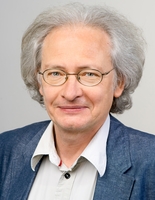
|
Prof. Dr. | Philipp | Scherer | 073 | – | |

|
Neelanjana | Sengupta | – | – | ||

|
Till | Siebenmorgen | 059 | – |
Lehrangebot der Arbeitsgruppe
Lehrveranstaltungen mit Beteiligung der Arbeitsgruppe
Abgeschlossene und laufende Abschlussarbeiten an der Arbeitsgruppe
- The Effect of Murine versus Human β2-Microglobulin on MHC I Peptide Loading
- Abschlussarbeit im Masterstudiengang Physik (Biophysik)
- Themensteller(in): Martin Zacharias
- Solvation free energy of protein surface side chains using an explicit solvent model
- Abschlussarbeit im Bachelorstudiengang Physik
- Themensteller(in): Martin Zacharias
- Studying ligand binding to the DNA minor groove using Molecular Dynamics simulations
- Abschlussarbeit im Bachelorstudiengang Physik
- Themensteller(in): Martin Zacharias
- Studying Mechanical Stability of Amyloid Fibrils with Molecular Dynamics
- Abschlussarbeit im Bachelorstudiengang Physik
- Themensteller(in): Martin Zacharias